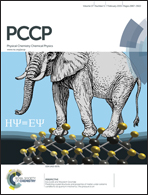Interaction and charge transfer between isolated thylakoids and multi-walled carbon nanotubes
Abstract
Charge separation in photosynthetic light reactions has gained much interest in an attempt to fabricate biological photovoltaic devices through integration of photosynthetic material and conducting electrodes. Direct interaction between thylakoids, as representatives of photosynthetic materials, and multi-walled carbon nanotubes (MWCNTs) is expected to increase charge transfer. Thylakoids are isolated from spinach leaf chloroplasts and pristine MWCNTs are dispersed in Triton X-100 (TX-100) as a surfactant to retain their electronic properties through non-covalent interactions. The Raman and UV-Vis spectra suggest close interactions between the thylakoids and the MWCNTs. Stable thylakoids including the embedded protein subunits and light harvesting antennas can be detected from the non-shifted 680 nm absorbance peak. The 50% fluorescence quenching in the MWCNTs-thylakoids preparation as compared to thylakoids alone using single wavelength excitation suggests charge transfer between the thylakoids and the MWCNTs.


 Please wait while we load your content...
Please wait while we load your content...